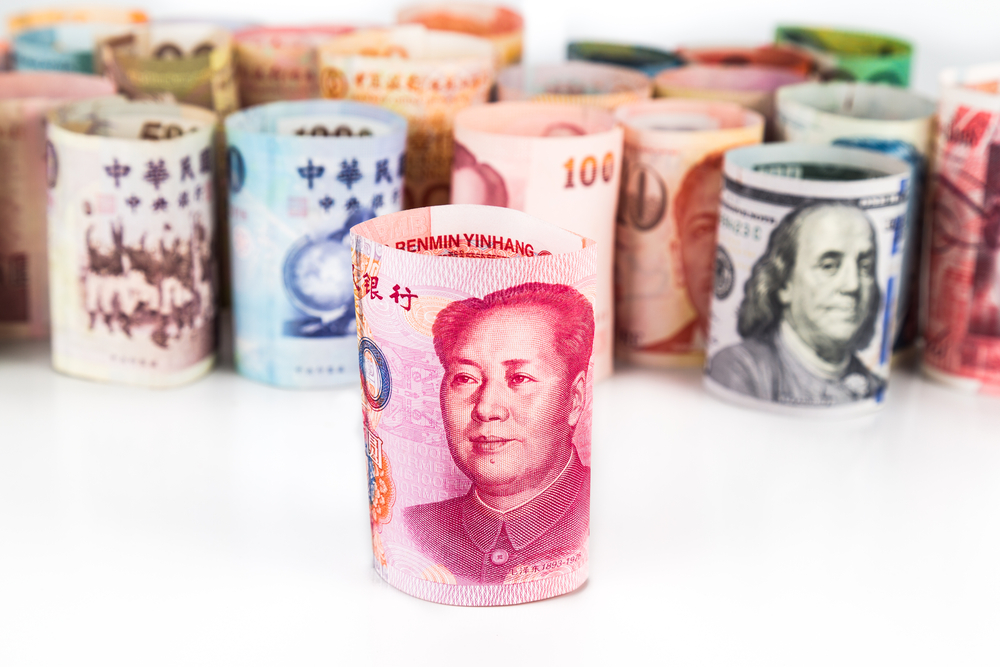Conflicting Goals and Interests Stymie the Renminbi’s Path to Float

Please note that we are not authorised to provide any investment advice. The content on this page is for information purposes only.
There are conflicts among the many objectives shaping China’s exchange rate policy. Politically, China’s leaders are keen on having the renminbi become a major international currency. For this purpose, the renminbi needs to be strong and stable enough that others will use it to settle trade balances and as a reserve currency. The People’s Bank of China’s (PBoC) near-term objective is to get the renminbi into the International Monetary Fund’s basket of elite currencies — the Special Drawing Rights.
There are conflicts among the many objectives shaping China’s exchange rate policy. Politically, China’s leaders are keen on having the renminbi become a major international currency. For this purpose, the renminbi needs to be strong and stable enough that others will use it to settle trade balances and as a reserve currency. The People’s Bank of China’s (PBoC) near-term objective is to get the renminbi into the International Monetary Fund’s basket of elite currencies — the Special Drawing Rights.
The IMF has indicated that to achieve this market forces should drive the value of the currency and it should be more flexible. For others, like the Ministry of Commerce and investors worried about the growth slowdown, the concern is that linking the renminbi to the US dollar has reduced competitiveness and lowered export growth by as much as 5–10 percent on an annual basis. This is at a time when most of China’s regional trading partners have depreciated their currencies by 15–20 percent over the past year.
Clearly, China’s leaders cannot address all these objectives at once. China needs a more sustainable strategy and this will require a different approach to managing rate adjustments.
China’s efforts so far have led to August’s unexpected devaluation, generating global turmoil and a perception that economic decision-making has been haphazard. Internationalising the renminbi makes sense as the outcome of a long-term process of opening up capital markets and liberalising exchange and interest rates. However, internationalising the renminbi should not be driving near-term policy choices that must respond to cyclical market shifts.
In the abundance of literature on internationalising the renminbi, surprisingly few commentators have questioned the logic of doing it now or even if it is technically feasible. To begin with, for a currency to find use abroad more frequently, it has to be available abroad. The United States did this by running huge trade deficits and paying with dollars. It also gave dollars away through its aid programs. However, China will not want to run trade deficits instead of surpluses, nor is there a strong case for a developing country to give away its money to richer nations.
The economic benefits for China from such a move are also not obvious either. China has historically placed a high value on maintaining economic stability. Internationalising its currency will inevitably lead to greater volatility as controls over capital movements, interest and exchange rates are relaxed. If promoting the renminbi as a global currency takes priority, it will force Beijing to sacrifice some control over monetary policy as pressures to maintain its value clashes with the need to address the economic slowdown.
So why is China considering it? One obvious reason is for political prestige, but China does not typically pursue such elusive goals at the sacrifice of domestic needs. More pertinent are security concerns as the leadership sees that US dominance of the international financial architecture as providing it with a strong weapon in times of conflict — as exemplified in the financial sanctions on Iran.
Some believe that internationalising the renminbi is not an end in itself but a pretext to push for more market reforms. There is logic in this argument, since it mandates improving the country’s financial markets and eliminating its capital controls. China has made considerable progress in this regard.
However, there is one area where promoting renminbi usage could generate near-term benefits and show a path for the future. That is regional trade and investment. Chinese president Xi Jinping’s Silk Road initiatives promote improved physical and financial connectivity with Southeast Asia, Central Asia, the Middle East, and Europe. Four centuries ago, at the height of China’s global trade reach, Chinese copper coins were an international medium of exchange throughout Asia and beyond. The vision today for the renminbi is on a much larger scale.
Nearly half of China’s trade relates to processing — comprising parts and components from other East Asian countries assembled in China for export to the West. Currencies of several Asian countries already track the renminbi more closely than the dollar, which means it could be a ‘reference currency’ for the production-sharing network. Asia generally would benefit from greater use of the renminbi to improve trade efficiency and reduce exchange rate risk in intra-regional trade.
It is technically more feasible for the renminbi to be a regional currency than a global one, since China runs trade deficits with many of its network partners. This also makes it more likely that Beijing can settle payments in renminbi and its partners will hold it as a reserve currency. With the Silk Road initiatives increasing the outflows of the renminbi for investment purposes, it will naturally become a more common medium of exchange.
For this to happen, the renminbi should move more in line with Asian currencies than be tied to the US dollar. Some depreciation is logical, but a gradual and more flexible exchange rate adjustment process over the past year would have been better than one bundled into an unexpected adjustment over a few days. The concept of maintaining stability to promote the renminbi as a reserve currency makes more sense in a regional context. Yet this would require accepting increased volatility relative to the US dollar.
Rationalising China’s exchange rate policy is republished with permission from East Asia Forum




